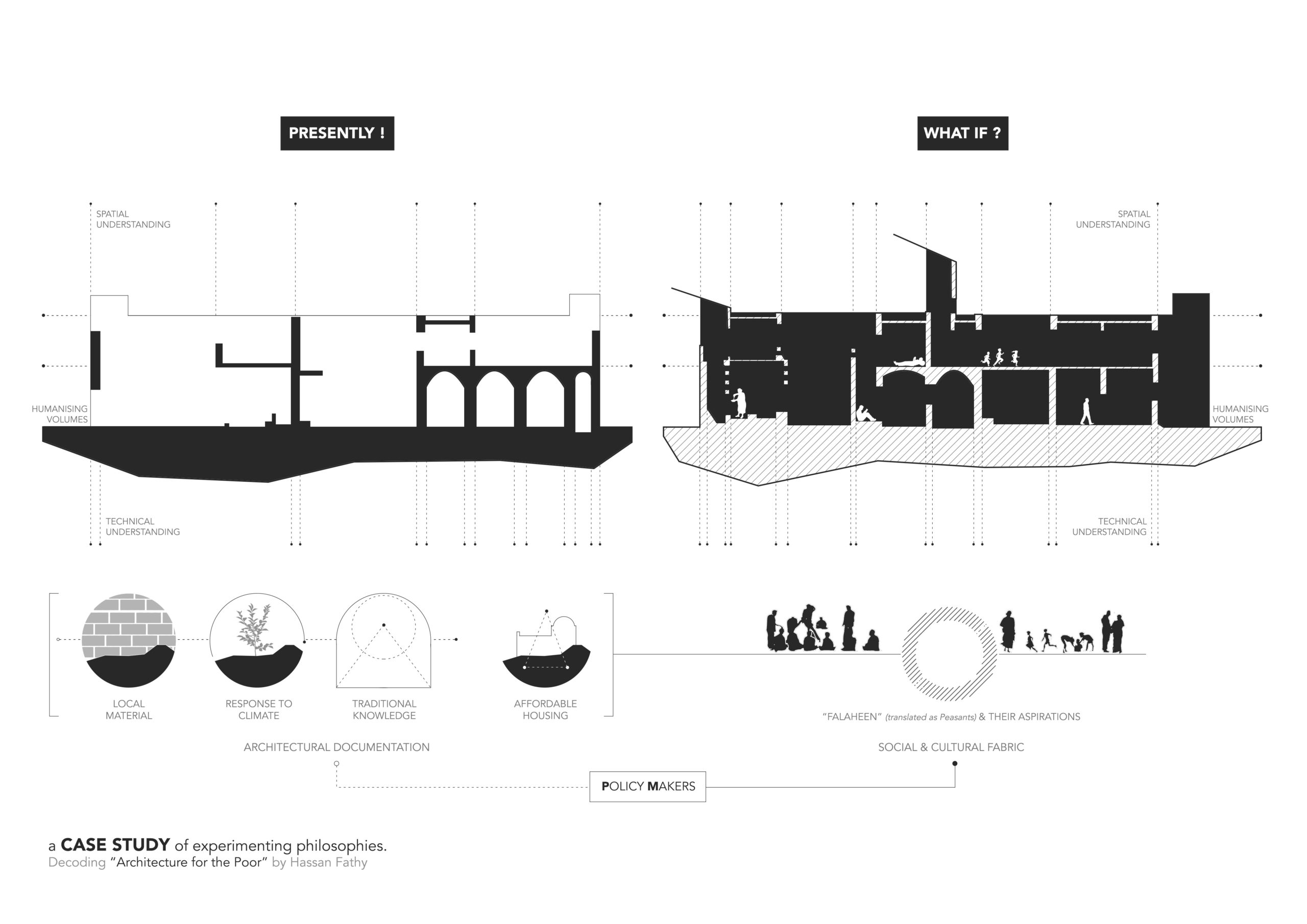This blog is a review of the book, Architecture for the poor: An experiment in rural Egypt by Hassan Fathy.
“The building client I am interested in is represented by the 800 million people of the third world who, according to statistics, are doomed to die before their time because of the poor conditions they live in” – Hassan Fathy

“Architecture for the Poor” written by award winning architect Hassan Fathy, is a detailed documentation of the building of New Gourna village assigned to him by the Egyptian government. The book is divided into 4 main chapters that cover the conception of the ideation process from early days till the controversial ending of the project.
Chapter 01– Prelude: Dream and Reality
The introductory chapter is an autobiographical take on how the passion to build for the poor first became an integral part of Fathy’s life. He was highly influenced by the traditional, culture and characteristic values identified in the Nubian Architecture. Fathy covers the architectural features through the learning of the history and techniques used by the Aswan villagers. He also mentions the steps that led to the development of the New Gourna village and how it came to be.
Chapter 02– Chorale: Man, Society and Technology
This chapter contains subtopics that are a thorough analysis of the architectural elements that are necessary to implement in the village to produce something that would be in harmony with the local context. Fathy’s studies led to designs that were influenced by location, climate and tradition rather than utilizing contemporary materials and design that given the context would not have been efficient in any sort of manner. The process of the decision making was intricately covered as well, to make it clear for future planners, of the hard work that goes into creating a successful plan.
Chapter 03– Fugue: Architect, Peasant and Bureaucrat
This chapter is a true reflection of the connection between an architect and their client. At this point, Fathy had realized that the resistance for the success of the project was not simply an external interference but an internal one as well. Their social need was a secondary, perhaps even a tertiary concern for Fathy and that was the downfall of the project. The project did respond to the needs of the villagers but it did not respond to their socioeconomic conditions.
Chapter 04– Finale: Gourna Dormant
The final chapter starts on a despondent note about the failure of the project and how it was due to different and crucial aspects that are interconnected. He realized that the failure of this project is nothing short of his own effort but due to the continuous opposition for change that the villagers, patrons and government have put forward. Nevertheless Fathy pushed as far as he possibly could to make that very change that many averted because of his well intentioned actions to improve the quality of life and standards of living of the villagers.
There is much to learn from this book whether architecturally or morally. Hassan Fathy was upfront with all of the uncertainties an architect may face when tackling a project as socially and locally driven as this. The documentation of the vernacular architecture of the Nubian people will serve generations to come.
The diagram aims at taking a step ahead from what is discussed by Hassan Fathy to study the larger picture of the case from a third person perspective.
The first phase “Presently” is what our interpretation of Hassan Fathy’s design approach was, while the second phase represents “What if?” which adds on the missing factor we believe Fathy’s approach required. The “Presently” side of the diagram highlights the architectural aspect of a project and neglects the social fabric of the context of Gourna which was a key factor to be considered. The focus of the project ranges from climate response, to material availability, to traditional knowledge and so on, however the socioeconomic approach seems to be less catered to. And hence the diagram highlights the people in use of the space on the “What if” side of the diagram, representing the socio-cultural context, which is as crucial as any other part of the building process. As far as Hassan Fathy is concerned, it can be concluded from the readings that “vernacular architecture” was seen as a representation of social fabric as well where as we believe that architecture can merely act as a bridge between the materiality & socio-economic factors of a project.
We also believe that to achieve an optimum outcome, policy makers are an integral part of a successful project. As one of Hassan Fathy’s major downfalls were the governmental institutions that would refuse to help in the improvement of people’s quality of life, it is a system that definitely needs to be addressed and challenged.

